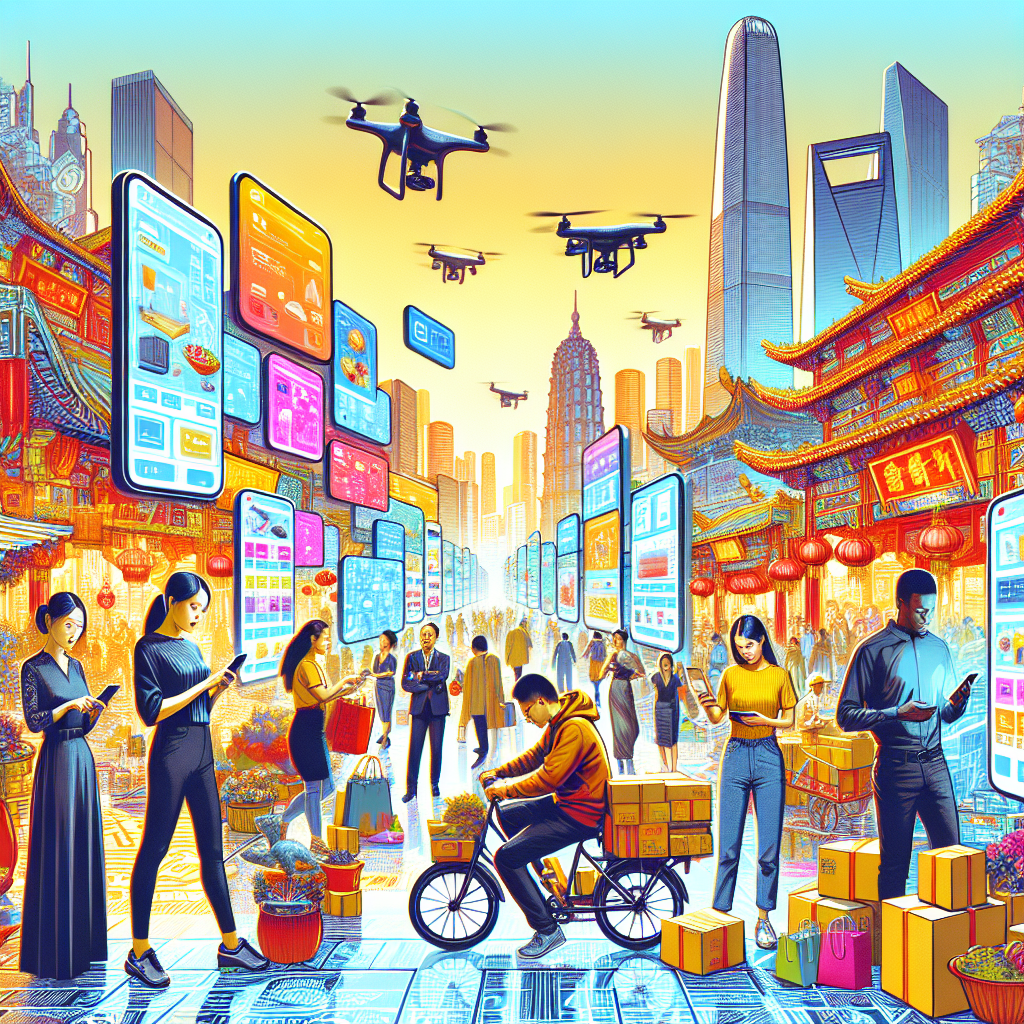
E-Commerce Trends Impacting China’s Deflationary Challenges
China’s economic landscape is undergoing significant changes, particularly in the realm of e-commerce. With the recent shifts in consumer behavior and the evolving market structure, deflationary pressures are becoming a pressing issue. Understanding the trends affecting e-commerce in China can provide insights into how these elements interplay with the country’s broader economic challenges.
The E-Commerce Boom: A Double-Edged Sword
In recent years, e-commerce in China has seen exponential growth. Platforms like Pinduoduo have surged in popularity, leveraging social commerce strategies that encourage users to shop together, thereby lowering prices. However, this rapid expansion also contributes to deflationary trends.
Factors Driving E-Commerce Growth
- Increased Internet Penetration: As more consumers gain access to the internet, particularly in rural areas, the e-commerce market continues to expand.
- Shift in Consumer Behavior: The pandemic has significantly altered shopping habits, with consumers increasingly preferring online shopping over traditional retail.
- Competitive Pricing: Platforms like Pinduoduo have introduced aggressive pricing strategies that attract budget-conscious consumers.
- Technological Advances: Innovations in logistics and payment systems streamline online shopping, enhancing the customer experience.
Understanding Deflation in China
Deflation, or the decline in prices, presents a unique challenge for China’s economy. While lower prices may seem beneficial for consumers, they can lead to reduced business revenues and, ultimately, an economic slowdown.
Consequences of Deflation
- Decreased Consumer Spending: When consumers anticipate falling prices, they may delay purchases, leading to decreased overall demand.
- Impact on Businesses: Companies may experience shrinking profit margins, limiting their ability to reinvest and grow.
- Increased Unemployment: As businesses cut costs in response to falling prices, this may lead to layoffs and increased unemployment rates.
The Role of Pinduoduo in the E-Commerce Landscape
Pinduoduo’s model emphasizes social shopping and collective purchasing, which significantly influences consumer purchasing habits and market dynamics. This platform has been instrumental in reaching lower-income consumers, tapping into a previously underserved demographic.
Key Features of Pinduoduo’s Strategy
- Group Buying: By allowing consumers to buy together for discounts, Pinduoduo creates a sense of community and encourages sharing among shoppers.
- Low-Cost Offerings: The platform focuses on low-priced goods, which appeals to budget-conscious consumers seeking value.
- Gamification: Pinduoduo employs gaming elements in shopping that engage users and drive repeat purchases.
How E-Commerce Trends Exacerbate Deflationary Pressures
The competitive nature of the e-commerce sector leads to aggressive pricing strategies, which can perpetuate deflation. As platforms vie for consumer attention, they often resort to deep discounts, inadvertently contributing to falling prices across the board.
Implications for Traditional Retailers
Traditional retailers face significant challenges due to the pricing strategies of e-commerce giants. Many struggle to compete on price, leading to potential store closures and reduced physical retail presence.
Adapting to a Changing Market
- Omni-Channel Strategies: Traditional retailers are adopting online strategies to enhance customer experience and maintain relevance.
- Personalization: Utilizing data analytics, retailers are tailoring offerings to meet specific customer needs, thereby enhancing loyalty.
- Branding Efforts: Emphasizing brand value and customer experience can help distinguish products despite price competition.
The Future of E-Commerce and Deflation in China
The intersection of e-commerce trends and deflationary pressures in China paints a complex picture for the future. Continued growth in the e-commerce sector is likely, but sustaining this growth in a deflationary climate will require innovative strategies.
Potential Solutions to Combat Deflation
- Government Intervention: Policymakers may need to consider measures to stimulate demand, including fiscal policy adjustments.
- Investment in Technology: Businesses can invest in technologies that enhance operational efficiency, helping mitigate cost pressures.
- Consumer Education: Educating consumers on the value of quality over price can help curb the cycle of demand for cheaper goods.
Conclusion
China’s e-commerce landscape is rapidly evolving, presenting both opportunities and challenges. The rise of platforms like Pinduoduo has revolutionized shopping behavior, but it also plays a pivotal role in the country’s deflationary struggles. By adapting strategies and understanding consumer psychology, stakeholders can navigate this changing environment more effectively.
As e-commerce continues to influence China’s economy, staying ahead of trends and understanding their implications will be essential for businesses and consumers alike. The road ahead may be complex, but with challenge comes opportunity for innovation and growth.



